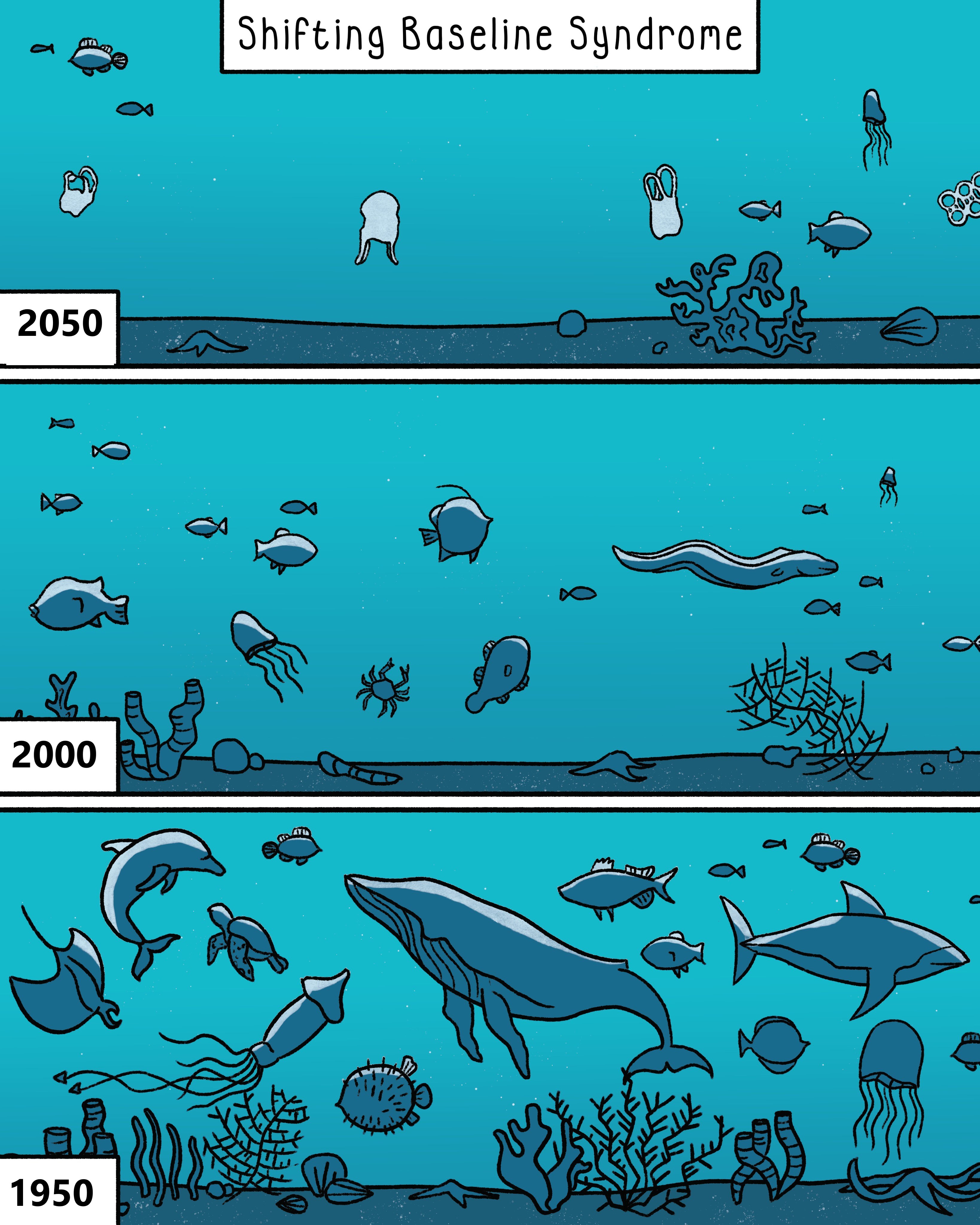
Imagine visiting the Great Barrier Reef 50 years ago. The colours were brighter, the fish more abundant, and the coral gardens stretched endlessly beneath the waves. Fast forward to today, and although the Reef is still a world wonder, science tells us it has undergone significant changes caused by multiple environmental factors.
Over time, and in many areas, the reef appears different today compared to what it was decades ago. Without a clear memory of earlier conditions, it’s easy for us to view the Reef we see now as the norm, even when it varies from its historical state.
This is the essence of shifting baseline syndrome, a gradual and often unnoticed shift in our expectations of what a healthy environment should look like.
Over generations, each new group of visitors, divers, and scientists may come to see a different version of nature as “standard.” This subtle shift can influence how we perceive change and what we believe is possible for the future. When it comes to the Great Barrier Reef, being aware of this helps ensure our goals remain ambitious and forward-looking.
A helpful example of shifting baselines can be found half a world away in the Florida Keys, USA. This 354-kilometre chain of 1,700 islands once supported one of the most spectacular reef ecosystems in the Western Hemisphere. For decades, its corals and marine life dazzled divers and snorkelers alike. But over the past 40 years, the Florida Keys have lost more than 90% of their live coral due to poor water quality and the impacts of climate change.
Today, snorkelers explore the area and often find it beautiful, noticing the fish and patches of coral and assuming that’s what the reef has always looked like. This reflects how naturally our perceptions can shift over time.
Is there hope? Or could this be the future of the Great Barrier Reef?
To protect the Reef, we need both hindsight and foresight. Recognising shifting baselines helps us avoid becoming too comfortable with the status quo and encourages us to aim high, to “turn back the clock” where possible and support recovery.
Fortunately, Australia is better positioned than most. Since the 1980s, the Australian Institute of Marine Science (AIMS) has been conducting long-term monitoring of the Great Barrier Reef. This invaluable record provides a reliable baseline to track coral cover and health over time, offering scientists a clearer picture of how the Reef is changing and why.
Beyond scientific surveys, historical information also plays a crucial role. Old photographs, early dive logs, oral histories, and even stories from local communities can help reconstruct what the Reef once looked like. Citizen science projects are contributing to this growing body of evidence, filling in gaps and providing a more comprehensive picture of the Reef’s past.
By combining modern science with these historical insights, we can establish a more accurate and meaningful baseline—one that reflects the Reef’s true potential. This knowledge can guide more ambitious conservation goals. If we accept today’s Reef as “normal,” we risk losing sight of what it could be. But by remembering its past, we can better shape its future.
The Great Barrier Reef’s story is still being written. With knowledge, determination, and an awareness of shifting baselines, we can help ensure that future generations experience a Reef as vibrant and full of life as it once was.
Contributed with thanks to Whitsunday Conservation Council.
Shifting baselines. Photo supplied by Whitsunday Conservation Council.